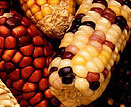 |
 |
|||||||||
|
International Agricultural ResearchBy Norman Borlaug A new evaluation by the World Bank of the Consultative Group for International Research (CGIAR) and its 16 research centers has prompted me to give my views on the importance and contributions of international agricultural research and the confusion in which CGIAR now finds itself. The World Bank reports that plant breeding research at CGIAR centers has declined 6.5% annually for the last decade. Moreover, growing restrictions have been placed on the funding the centers rAeceive. International agricultural research began in Mexico in 1943 and has grown into an international system of collaborative research, seed exchange, and training organizations that helped build many national agricultural research systems in developing countries. In only 10 years, wheat and rice harvests in Asia doubled, hunger declined, and incomes improved. The international wheat, rice, and maize programs that had developed high-yielding technologies became the models for a collaborative international research network. In 1971, the Rockefeller and Ford Foundations, the World Bank, FAO, UNDP, and USAID created CGIAR, a donors' club dedicated to funding an expanded international research system. Over the next 30 years, the number of research centers grew from 4 to 16, covering the major food crops and farming systems in food-deficit, low-income countries. The total budget increased 10-fold--to nearly US$400 million per year. But somehow in this evolution, the CGIAR lost touch with its original purpose--to feed the hungry. It has become an unwieldy and uncoordinated beast, with too many masters and proliferating goals. Yet, a well-focused international agricultural research system that backstops and complements national agricultural research organizations and smallholder farmers is a vital component in a global research system. CGIAR must return to its original purpose and to its greatest comparative advantage--developing improved food crop varieties, using a combination of conventional plant breeding techniques and new techniques of biotechnology, with complementary crop management practices, to address major productionA issues in both the favored and the more difficult marginal lands. Another concern stems from the spilling over of the controversy about genetically modified (GM) varieties from industrialized into developing countries, which has paralyzed legislative action on GM crops. We should not underestimate the degree of resistance to GM crops in many countries, although it is heartening to see Argentina, Brazil, China, and India moving ahead with well-considered applications of biotechnology. I am optimistic that multinational biotechnology companies are willing to devote more resources to solving the problems of poor farmers and consumers. Creative partnerships have been established between private and public research institutions--especially universities, but also CGIAR centers--with financial support provided by private companies, governments, and private foundations. In addition, CGIAR, with seed collections representing much of the genetic diversity in the major food crops, is in a unique Aposition to negotiate with the private sector to generate GM technology that benefits the poor, in return for access to its gene banks. The World Bank is in a unique position, with its US$50 million of CGIAR funding (until recently completely unrestricted; it now assigns half its contribution to multicenter research initiatives called Challenge Programs), to work with other donors to expand unrestricted funding in the CGIAR, which will help greatly to rationalize priority setting. The Bank can also help refocus the CGIAR mission on raising smallholder agricultural productivity in the near term, rather than trying to be all things to all people. Norman E. Borlaug
|
|